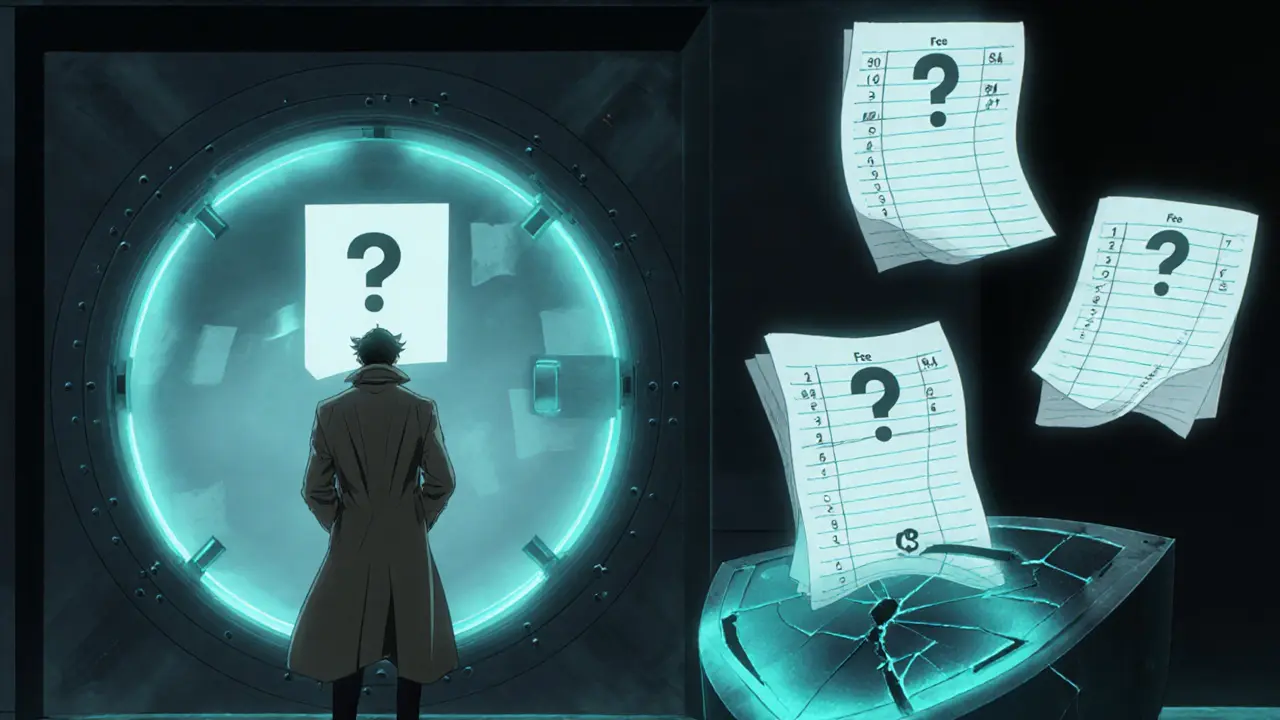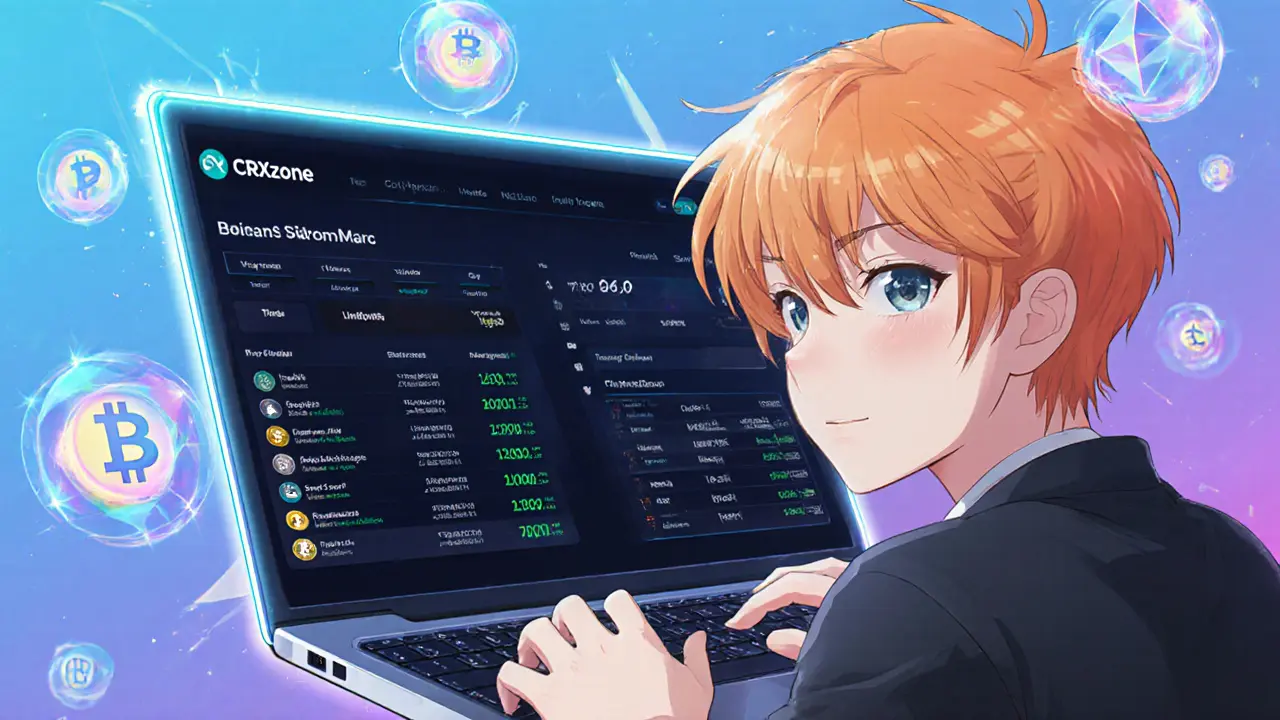CRXzone Crypto Exchange Comparison Tool
- Spot Trading Pairs Limited
- Futures/Margin No
- Advanced Order Types No
- API Access No Public Docs
- Cold Storage Ratio Not Stated
- Security Audits No Reports
- Regulatory Licenses None Listed
- Insurance Policy Not Disclosed
| Feature | CRXzone | Binance | Coinbase | Kraken |
|---|---|---|---|---|
| Maker/Taker Fees | Undisclosed | 0.10% (tiered) | 0-0.50% (tiered) | 0.16-0.26% maker, 0.26-0.36% taker |
| Withdrawal Fees | Not Listed | Varies by coin | Varies by coin | Varies by coin |
| Cold Storage | Not Stated | >95% | >98% | >95% |
| Regulatory Licenses | None Listed | Multiple Global | NY BitLicense, FCA, BaFin | FinCEN MSB, FCA |
- ✓Simple UI for beginners
- ✓Potential for lower slippage
- ✓No complex trading tools needed
- ✗Opaque fee structure
- ✗Limited security disclosures
- ✗No regulatory compliance
- ✗Basic support options
When you hear the name CRXzone, the first question is whether it can stand up to the giants like Binance or Coinbase. This review breaks down the platform’s core features, security posture, fee structure, regulatory standing, and overall user experience so you can decide if it deserves a spot in your trading toolbox.
Quick Takeaways
- Transparency: Limited public documentation on ownership, licensing, and security audits.
- Trading options: Spot trading only; no futures, margin, or advanced order types.
- Fees: Not publicly disclosed, making cost comparison difficult.
- Security: No clear cold‑storage or insurance claims; no third‑party audit reports.
- Support: Sparse details on support channels and response times.
Platform Overview
CRXzone positions itself as a retail‑focused spot exchange. The UI is clean, offering market and limit orders for a handful of major coins such as Bitcoin (BTC) and Ethereum (ETH), plus a rotating list of altcoins. However, the exact count of supported pairs isn’t published, and the site lacks a public API documentation page that most serious traders rely on.
Features & Trading Options
Unlike tier‑1 exchanges, CRXzone does not offer futures, perpetual swaps, or margin trading. The order types are limited to:
- Market orders - instant execution at the best available price.
- Limit orders - set a price ceiling or floor for execution.
There is no built‑in stop‑loss, trailing‑stop, or iceberg order functionality. For traders who need only basic spot exposure, this simplicity can be a plus, but power users will find the toolset lacking.
Security & Fund Protection
Security is the biggest gray area for CRXzone. Major exchanges routinely publish cold‑storage ratios (e.g., Binance holds >95% of user funds offline) and audit attestations. CRXzone’s website does not disclose whether it uses multi‑signature wallets, cold storage, or any third‑party insurance. No SOC2, ISO27001, or independent penetration‑test reports are linked.
Without transparent security documentation, users must rely on the platform’s reputation-something that is still building. In the event of a breach, the lack of an insurance policy could expose traders to total loss of assets.
Fee Structure & Costs
Fees are notoriously opaque on CRXzone. The exchange does not publish a tiered maker‑taker schedule like Binance (0.1% spot) or Kraken (0.16‑0.26% maker, 0.26‑0.36% taker). Withdrawal fees are similarly absent, forcing users to test small withdrawals to gauge costs.
For cost‑sensitive traders, the unknown fee model adds risk. If you’re comparing platforms, the lack of a clear fee table makes CRXzone a less attractive option than exchanges that disclose exact percentages.

Regulatory & Compliance Landscape
Regulatory compliance is another weak spot. Established players hold multiple licenses: Coinbase operates under a New York BitLicense, Kraken is registered with FinCEN and holds FCA authorization, and Binance maintains assorted local licenses. CRXzone does not list any jurisdictional licences, nor does it provide a KYC/AML policy link.
Operating without clear regulatory approval can limit the exchange’s ability to service users in regulated markets (e.g., the U.S., EU, Canada). This uncertainty also raises questions about the platform’s ability to freeze accounts, cooperate with law‑enforcement, or protect users under consumer‑rights frameworks.
User Experience & Customer Support
The UI is straightforward, but the support ecosystem is barely documented. There’s a generic email form and a live‑chat widget that appears only after you log in. No phone support, no multilingual help center, and no published average response time. In contrast, Coinbase advertises sub‑2‑hour priority response, while Binance offers 24/7 live chat in 15+ languages.
For beginners who may need hands‑on assistance, this limited support could become a pain point.
How CRXzone Stacks Up - Comparison Table
| Feature | CRXzone | Binance | Coinbase | Kraken |
|---|---|---|---|---|
| Spot trading pairs | Limited, undocumented | >1,200 | >100 | ~600 |
| Futures / Margin | No | Yes | No (Coinbase Pro only futures in limited regions) | Yes |
| Maker/Taker fees | Undisclosed | 0.10% (tiered discounts) | 0‑0.50% (tiered) | 0.16‑0.26% maker, 0.26‑0.36% taker |
| Cold storage ratio | Not stated | >95% | >98% | >95% |
| Regulatory licences | None listed | Multiple global licences | NY BitLicense, FCA, BaFin | FinCEN MSB, FCA |
| Customer support channels | Email, in‑app chat | Live chat, phone, social | Phone, chat, email | Live chat, ticket system |
Pros & Cons
- Pros
- Simple UI - easy for beginners who only need spot trading.
- Potentially lower traffic, which could mean less slippage on small trades.
- Cons
- Opaque ownership and licensing - raises trust concerns.
- No published security audits or cold‑storage details.
- Fees not disclosed, making cost planning impossible.
- Lacks advanced trading tools and robust support.
Final Verdict - Is CRXzone Worth Your Money?
If you’re a casual trader who wants a clean, no‑frills spot interface and you’re comfortable testing the platform with a tiny amount, CRXzone might serve as a low‑traffic alternative. However, for anyone who values transparency, strong security guarantees, regulated backing, or advanced order types, the exchange falls short. The safest move is to start with a well‑established exchange and keep CRXzone as a secondary, low‑risk sandbox.
Frequently Asked Questions
What cryptocurrencies can I trade on CRXzone?
CRXzone lists major coins such as Bitcoin (BTC) and Ethereum (ETH) and a rotating selection of altcoins. The exact number of pairs isn’t publicly disclosed, so checking the platform directly is necessary.
Does CRXzone offer any security guarantees or insurance?
No explicit insurance policy or cold‑storage percentage is published. Without third‑party audit reports, users must assume standard risk and consider only modest deposits.
Are there any hidden fees when withdrawing funds?
Withdrawal fees are not listed on the website. The only way to discover them is to initiate a small withdrawal and see the exact charge.
Is CRXzone regulated in any jurisdiction?
Public documentation does not show any licensing from financial regulators such as the FCA, FinCEN, or the NYDFS. This lack of licensing suggests the exchange operates without formal regulatory oversight.
How does CRXzone’s customer support compare to bigger exchanges?
Support is limited to email and an in‑app chat widget that appears after login. There’s no phone line, no multilingual help center, and no published response‑time SLA, unlike Binance’s 24/7 live chat or Coinbase’s phone support.

Cynthia Rice
October 5, 2025 AT 09:34In the grand theater of crypto, CRXzone plays the understudy – eager but painfully quiet.
Promise Usoh
October 10, 2025 AT 14:37The presented data, albeit scant, elicits a contemplation of the platform's veracity. However, the lack of transparency invesigates a potential risk.
Bhagwat Sen
October 15, 2025 AT 19:40Honestly, the whole thing feels like a half‑baked demo. No API docs, no futures, just a bland UI that screams "newbie only" and leaves serious traders hanging.
Amy Harrison
October 21, 2025 AT 00:43Hey folks! If you’re just dipping your toes, CRXzone’s simple layout might be a comfy place to start 😊. But keep your stakes tiny until you see how the fees actually work.
Miranda Co
October 26, 2025 AT 05:46Look, the UI is easy enough, but you’re basically gambling on a platform that won’t tell you the cost of entry. Don’t be a fool – test with pennies.
Marc Addington
October 31, 2025 AT 10:49This exchange is a disgrace.
Natalie Rawley
November 5, 2025 AT 15:52Wow, CRXzone really thinks “no fees” is a selling point? Newsflash: users want clarity, not mystery wrapped in a pretty UI.
John Corey Turner
November 10, 2025 AT 20:55One could argue that a minimalist platform reduces cognitive load, yet the absence of essential disclosures creates a void where trust should reside.
Katherine Sparks
November 16, 2025 AT 01:58While the intentions behind a streamlined interface are commendable, the omission of fundamental security metrics-such as cold‑storage ratios and audit reports-undermines any confidence one might initially feel. A more transparent approach would serve both novices and seasoned traders alike; please consider publishing these details to foster a safer ecosystem. 🙂